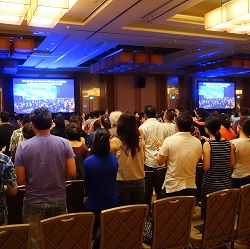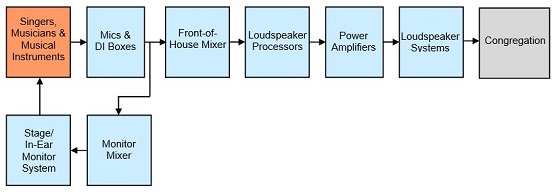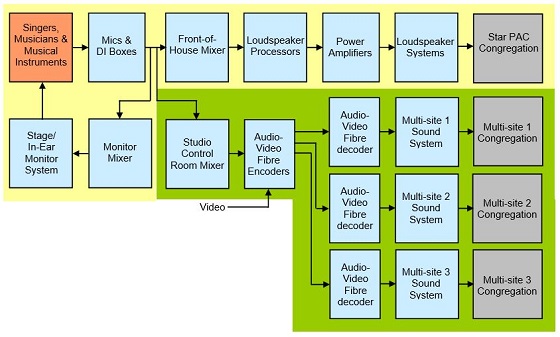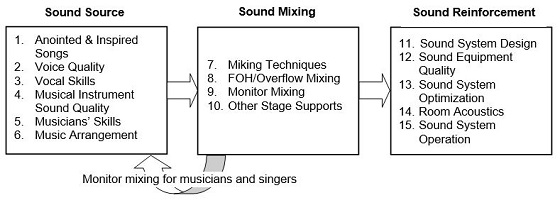All of us love to have a consistently great audio experience during praise and worship as well as the sermon.
But how do we get there?
To begin, let us understand the basic block diagram of a typical sound reinforcement system as shown in Figure 1 below.
For a typical sound reinforcement system, the singers and musical instruments (in orange box) are the sound sources that are usually picked up by microphones. For some musical instruments, DI (direct injection) boxes are employed.
These signals are then channeled to a FOH (front of house) console/mixer. The mix engineer then mixes these inputs and mix is then fed to the loudspeaker processors, which in turn feed the various power amplifiers which drives the loudspeaker systems.
For a properly set up sound system, the congregation is thus able to hear the amplified sound well even at the furthest seats.
Figure 1: A simplified block diagram of a typical church sound reinforcement system
In more elaborate set up, to provide customized mix for each singers and musicians, a parallel feed is channeled to a separate monitor mixer where this monitor mix is performed by a dedicated monitor mix engineer.
For a multi-site church setup, a simplified signal flow diagram incorporating simplified sound reinforcement block diagram is as shown in Figure 2.
Figure 2: A simplified block diagram of the sound reinforcement system for the main venue (highlighted in light yellow section) with simplified signal flow diagram to multi-site venues (highlighted in green section)
In some cases, the audio feed to the various multi-site venues may come from a separate audio mixer with a dedicated mix engineer located at a separate studio control room where the sound mixing is done based on the studio monitor loudspeakers. This allows the FOH mix engineer to concentrate solely on the mix for the main venue and not worry about the mix for multi-site venues.
The audio mix for the multi-site venue together with the video mix is then fed to fibre encoders which can be linked via commercial fibre network to the various multi-site venues for eventual decoding and feeding into the respective sound systems on-site.
Based on the above sound system block diagram and signal flow, the next step is to map out what are the successful ingredients for a great audio experience. Figure 3 below broadly paints the critical factors to consider for a great sound experience for the congregation:
Figure 3: Critical factors for obtaining a great sound experience























